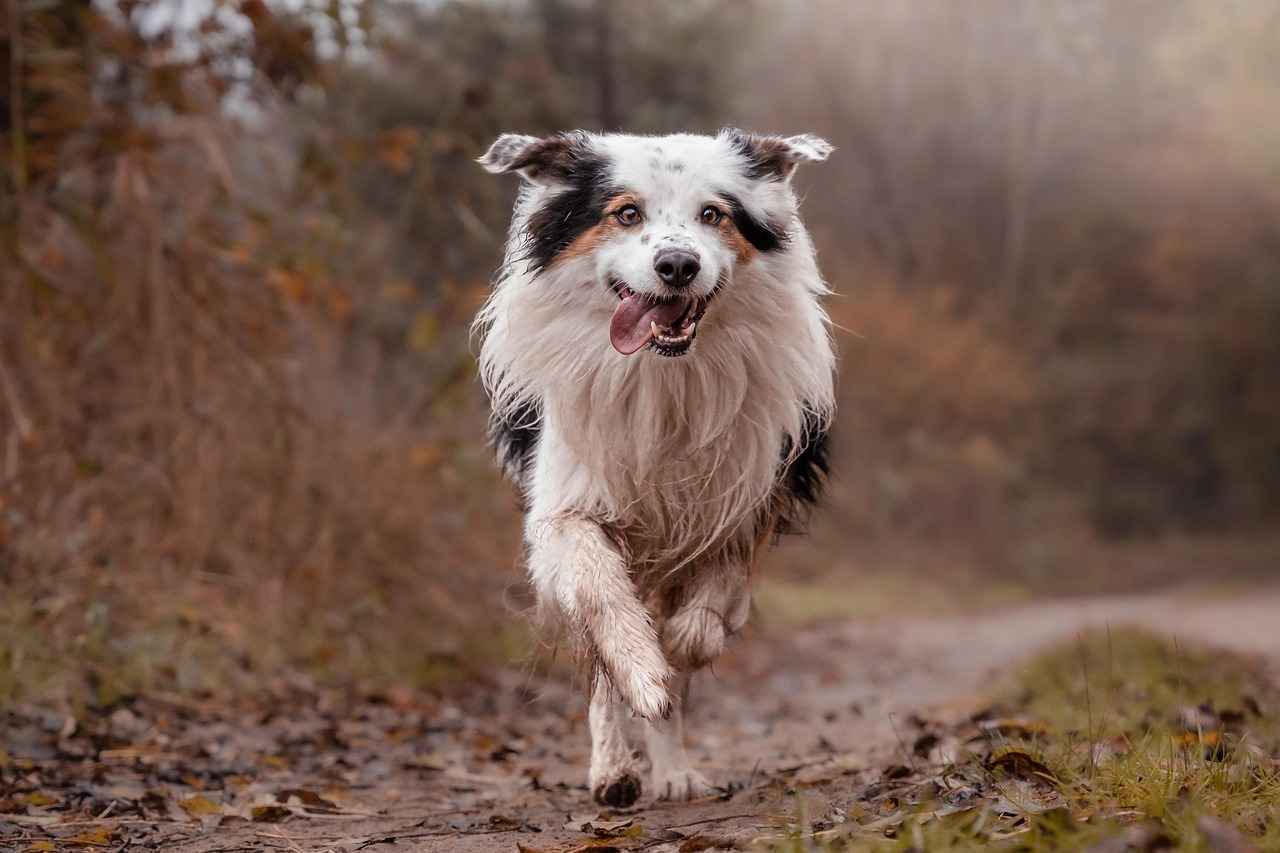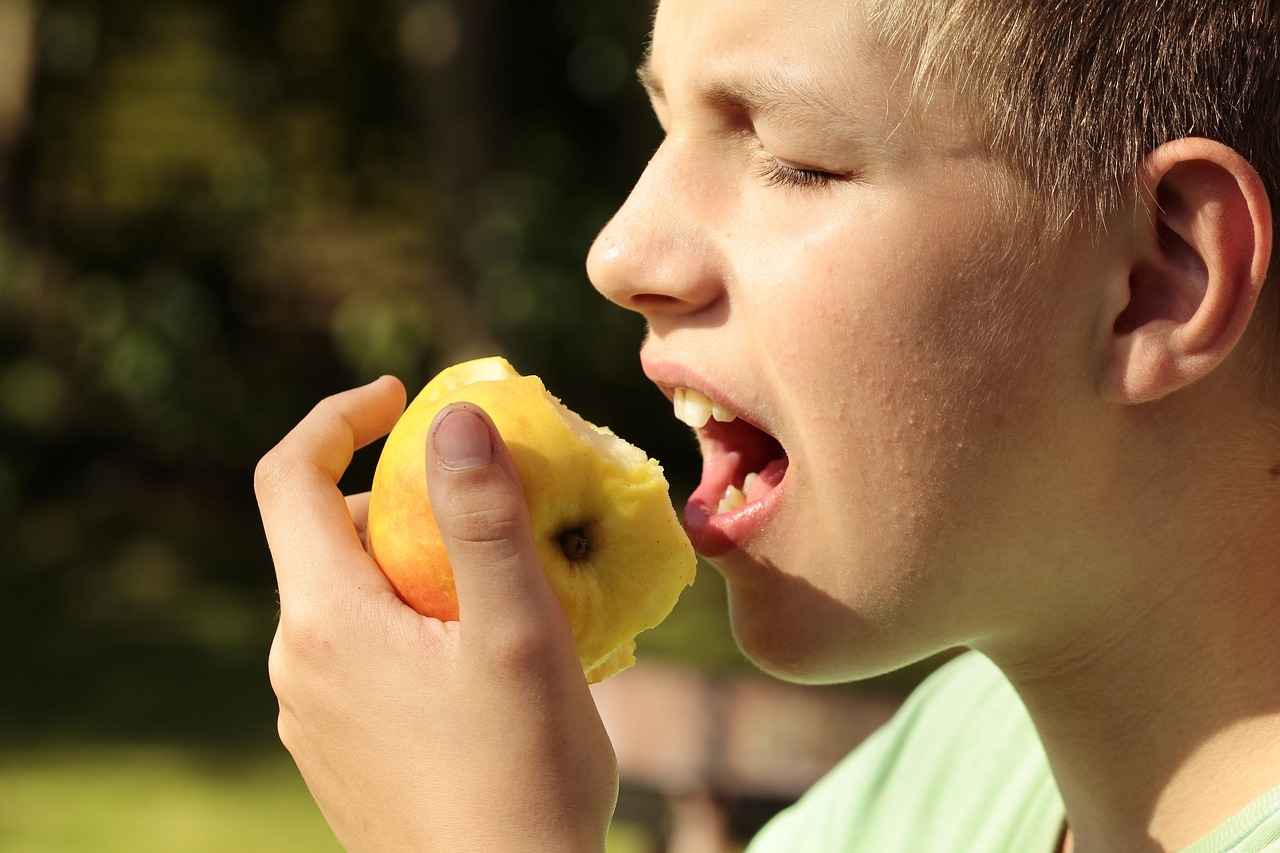This article provides essential information on treating minor dog bites, ensuring you understand the steps to take for safe and effective wound care.
Understanding Minor Dog Bites
Minor dog bites can occur unexpectedly, often resulting in small puncture wounds or scratches. Recognizing the severity of the bite is crucial for appropriate treatment. It’s important to remember that even minor bites can lead to infections if not properly cared for.
Initial Steps After a Dog Bite
Immediate action is vital after a dog bite. Knowing how to clean the wound and when to seek medical attention can prevent infections and complications. Here are the steps to follow:
- Stay calm and assess the situation.
- Clean the wound gently with soap and water.
- Apply an antiseptic solution to disinfect the area.
Assessing the Severity of the Bite
Evaluating the bite’s severity helps determine the necessary treatment. Minor bites typically involve superficial wounds, while deeper bites may require professional care. If you notice excessive bleeding or if the wound appears deep, consult a veterinarian or medical professional.
Signs of Infection to Watch For
Monitoring for signs of infection is essential for timely treatment. Look for:
- Redness around the wound
- Swelling or warmth
- Pus or discharge
When to Seek Medical Attention
If the bite is deep or shows signs of infection, immediate medical advice is recommended. Additionally, if the dog that bit you is unknown or unvaccinated, seek help promptly.
Cleaning the Wound Properly
Proper wound cleaning is a critical step in minor dog bite treatment. Use clean water and mild soap to rinse the area thoroughly. After cleaning, apply a sterile bandage to protect the wound.
Home Care Tips for Minor Dog Bites
After initial treatment, home care plays a significant role in recovery. Here are some tips:
- Change the bandage daily and keep the wound clean.
- Monitor the wound for any changes.
Preventing Future Dog Bites
Understanding how to prevent dog bites is essential for safety. Educating yourself and others about dog behavior can significantly reduce the risk of bites.
Conclusion: Staying Safe and Informed
In conclusion, knowing how to handle minor dog bites effectively can ensure safety and promote healing. Staying informed and prepared is essential for pet owners and caregivers alike.

Understanding Minor Dog Bites
Minor dog bites can happen at any moment, often resulting in small puncture wounds or scratches that may seem insignificant at first glance. However, it is essential to recognize the importance of assessing the severity of the bite as it can determine the appropriate treatment needed. Understanding the nature of these bites can help pet owners and caregivers respond effectively.
Typically, minor bites involve superficial injuries that may not penetrate deeply into the skin. These types of injuries can occur during playful interactions, when a dog feels threatened, or during rough play. It is crucial to remain calm and evaluate the situation to ensure proper care is administered.
| Type of Bite | Characteristics | Treatment Recommendation |
|---|---|---|
| Superficial Scratch | Redness, slight bleeding | Clean with soap and water, apply antiseptic |
| Puncture Wound | Small hole, potential for deeper tissue injury | Clean thoroughly, monitor for infection |
Recognizing the signs of a minor bite is vital. If the wound appears clean and does not show signs of infection, at-home care may suffice. However, if the bite is deep or if there’s significant bleeding, it is important to seek professional medical advice. Early intervention can prevent complications such as infections or further injuries.
In conclusion, being aware of the dynamics surrounding minor dog bites is crucial. By understanding the nature of these injuries and recognizing the signs that necessitate treatment, pet owners can ensure a swift and effective response, promoting healing and safety for both the dog and the individual involved.

Initial Steps After a Dog Bite
Immediate action is crucial after a dog bite. Knowing the correct steps to take can significantly reduce the risk of complications and infections. Here’s a detailed guide on how to handle this situation effectively.
When a dog bite occurs, the first step is to stay calm and assess the situation. Here’s a structured approach to follow:
- Ensure Safety: Move away from the dog to avoid further bites. If the dog is aggressive, seek help.
- Assess the Wound: Check the severity of the bite. Minor bites may only cause superficial wounds, while deeper bites require immediate medical attention.
- Clean the Wound: Rinse the bite area with warm water and mild soap. This helps remove dirt and bacteria.
- Control Bleeding: If the wound is bleeding, apply gentle pressure with a clean cloth or bandage until it stops.
After cleaning, it’s essential to monitor for any signs of infection. Look for redness, swelling, or pus around the wound. If these symptoms arise, consult a healthcare professional promptly.
It’s important to know when to seek professional help. If the bite is deep, won’t stop bleeding, or shows signs of infection, do not hesitate to contact a doctor. Additionally, if the dog was unvaccinated or unknown, a tetanus shot or rabies vaccine may be necessary.
By acting quickly and following these steps, you can significantly improve the chances of a smooth recovery from a dog bite.
Assessing the Severity of the Bite
is a critical step in managing minor dog bites effectively. Understanding the nature of the injury can greatly influence the appropriate response and treatment needed.
When a dog bite occurs, it is essential to evaluate the wound’s depth and severity. Minor bites often result in superficial injuries such as small puncture wounds or scratches that typically do not penetrate deeply into the skin. These types of injuries may only require basic first aid, including cleaning and dressing the wound.
In contrast, deeper bites can cause significant tissue damage and may necessitate professional medical intervention. If the bite has punctured the skin deeply or if there is excessive bleeding, it is crucial to seek medical attention promptly. In some cases, deeper wounds may require stitches or other medical treatments to ensure proper healing and to prevent complications such as infections.
| Severity Level | Description | Treatment Required |
|---|---|---|
| Minor Bite | Superficial wounds, small punctures, or scratches | Basic first aid, cleaning, and dressing |
| Moderate Bite | Deeper punctures, moderate bleeding | Medical evaluation, possible stitches |
| Severe Bite | Deep tissue damage, significant bleeding | Immediate medical attention required |
Additionally, it is important to monitor the wound for any signs of infection, which may include redness, swelling, or the presence of pus. If any of these symptoms arise, seeking medical care is advisable.
In conclusion, assessing the severity of a dog bite is pivotal for determining the right course of action. By understanding the differences between minor and deeper bites, individuals can take appropriate steps to ensure proper treatment and recovery.
Signs of Infection to Watch For
When it comes to treating minor dog bites, vigilance is key. After a dog bite, it is crucial to monitor the wound closely for any signs of infection. Recognizing these signs early can significantly impact the healing process and prevent complications.
Infections can develop if bacteria enter the body through the broken skin. Therefore, being aware of the common symptoms can help you take timely action. Here are some important signs to look out for:
- Redness: If the area surrounding the bite becomes increasingly red, this could indicate inflammation or infection.
- Swelling: Noticeable swelling around the wound is another sign that the body is responding to an infection.
- Pus or Discharge: The presence of pus, which is typically yellow or green, is a clear indication of infection. Any unusual discharge should be taken seriously.
- Pain or Tenderness: Increased pain or tenderness in the area can signal that the wound is not healing properly.
- Fever: A fever may accompany local symptoms, indicating that the body is fighting an infection.
In addition to these signs, keep an eye out for any changes in the dog’s behavior. If the dog seems lethargic or uninterested in food, this could also be a sign of infection.
If you notice any of these symptoms, it is essential to seek medical attention promptly. Early intervention can lead to more effective treatment and a quicker recovery. Remember that while minor dog bites can often be treated at home, any signs of infection should not be ignored.
In conclusion, monitoring for signs of infection is a critical aspect of caring for a minor dog bite. By being proactive and observant, you can ensure a safer and smoother recovery process.
When to Seek Medical Attention
Understanding when to consult a healthcare professional is crucial for ensuring proper recovery from a dog bite. While many dog bites may seem minor, it is essential to assess the situation carefully to avoid complications. Prompt medical attention can significantly reduce the risk of infection and promote faster healing.
Minor dog bites often result in superficial wounds that can be treated at home. However, if the bite is deep, it can damage not only the skin but also underlying tissues. In such cases, it is imperative to seek immediate medical advice. Here are some key indicators that suggest it is time to consult a healthcare professional:
- Depth of the Bite: If the bite penetrates deeply, it may require stitches or other medical intervention.
- Signs of Infection: Watch for redness, swelling, warmth, or pus around the wound. These symptoms indicate that an infection may be developing.
- Persistent Pain: If pain from the bite does not subside or worsens over time, it is advisable to consult a healthcare provider.
- Difficulty Moving: If the bite is on a joint or limb and movement becomes difficult or painful, seek medical attention.
- Fever: A fever following a dog bite can be a sign of infection and should not be ignored.
- Underlying Health Conditions: Individuals with compromised immune systems or pre-existing health conditions should seek medical advice for any dog bite.
In conclusion, recognizing the signs that necessitate medical attention can make a significant difference in recovery outcomes. If in doubt, it is always better to err on the side of caution and consult a healthcare professional to ensure proper treatment.
Cleaning the Wound Properly
Proper wound cleaning is a critical step in the treatment of minor dog bites. It is essential to follow the right techniques to minimize the risk of infection and promote healing. In this section, we will explore the best practices for cleaning a wound effectively.
First and foremost, it is vital to assess the wound before cleaning. If the bite is deep or excessively bleeding, it is advisable to seek professional help immediately. However, for minor wounds, follow these steps:
- Wash Your Hands: Before touching the wound, thoroughly wash your hands with soap and water to prevent introducing bacteria.
- Rinse the Wound: Gently rinse the bite area under clean, running water for at least 5 to 10 minutes. This helps to remove dirt and debris.
- Use Mild Soap: If necessary, use a mild soap to clean around the wound. Avoid getting soap directly in the wound as it can cause irritation.
- Pat Dry: After rinsing, gently pat the area dry with a clean towel or gauze. Do not rub, as this can irritate the wound.
- Apply an Antiseptic: Use an over-the-counter antiseptic solution to clean the wound further. This step is crucial for killing any remaining bacteria.
- Cover the Wound: Finally, cover the wound with a sterile bandage or dressing to protect it from further injury and contamination.
After cleaning, monitor the wound for any signs of infection, such as increased redness, swelling, or pus. If any of these symptoms occur, seek medical attention promptly.
In conclusion, proper wound cleaning is essential in managing minor dog bites. By following these steps, you can significantly reduce the risk of complications and promote a faster healing process. Always remember that if you are uncertain about the severity of the bite, it is best to consult a healthcare professional.

Home Care Tips for Minor Dog Bites
After receiving initial treatment for a minor dog bite, home care becomes a crucial aspect of the recovery process. Simple yet effective practices can significantly aid in healing and ensure the comfort of the affected area. Here are some essential tips to follow:
- Keep the Wound Clean: It is vital to maintain cleanliness around the bite area. Gently wash the wound with mild soap and water at least twice a day to minimize the risk of infection.
- Apply Antiseptics: After cleaning, apply an antiseptic solution or ointment to the wound. This step helps in preventing bacterial growth and promotes faster healing.
- Use Bandages Wisely: Cover the wound with a sterile bandage, changing it regularly to keep the area protected from dirt and bacteria. Ensure the bandage is not too tight, as this can impede blood flow.
- Monitor for Signs of Infection: Keep an eye on the wound for any signs of infection, such as increased redness, swelling, or pus. If any of these symptoms occur, seek medical advice promptly.
- Manage Pain and Discomfort: If the bite causes pain, over-the-counter pain relief medications can be administered, following the recommended dosage. Always consult a healthcare professional if unsure.
- Maintain a Healthy Diet: A balanced diet rich in vitamins and minerals can aid in the healing process. Foods high in vitamin C and protein are particularly beneficial.
- Rest and Recovery: Allow the affected area to rest. Avoid strenuous activities that may aggravate the wound and delay healing.
By following these home care tips, you can ensure a smoother recovery from minor dog bites. Remember, while home care is essential, do not hesitate to consult a healthcare professional if you have any concerns about the healing process.
Applying Antiseptics and Bandages
is a crucial step in the treatment of minor dog bites. Proper application not only protects the wound but also significantly enhances the healing process. Here’s a detailed guide on how to effectively use antiseptics and bandages for optimal recovery.
After assessing the severity of the bite and cleaning the wound, the next step involves applying an antiseptic. Antiseptics are substances that prevent the growth of disease-causing microorganisms. They can be found in various forms, including creams, sprays, and wipes. When selecting an antiseptic, look for options that are specifically designed for wound care, as these are generally more effective and safer for your skin.
- Choose the Right Antiseptic: Common choices include hydrogen peroxide, iodine solutions, or alcohol-free antiseptic wipes. Always read the instructions to ensure safe usage.
- Application Technique: Use a clean cotton ball or gauze to apply the antiseptic. Gently dab the antiseptic onto the wound, ensuring that the entire area is covered without rubbing too hard.
Once the antiseptic has been applied, the next step is to cover the wound with a bandage. This protects the area from dirt and bacteria, reducing the risk of infection.
- Select the Appropriate Bandage: Choose a bandage that is appropriate for the size and type of the wound. Adhesive bandages work well for small cuts, while larger wounds may require sterile gauze and tape.
- Proper Application: Ensure the bandage is applied snugly but not too tight, as this can restrict blood flow. Change the bandage daily or whenever it becomes wet or dirty.
In conclusion, correctly applying antiseptics and bandages is vital for protecting minor dog bite wounds from irritation and infection. By following these steps, you can enhance the healing process and promote a quicker recovery.
Monitoring the Healing Process
is an essential aspect of treating minor dog bites. After the initial care, it is crucial to keep a close watch on the wound’s condition to ensure a smooth recovery. Regular assessments can help identify any potential issues early, allowing for timely intervention and reducing the risk of complications.
During the healing process, it is important to check the wound daily for any signs of infection. Look for symptoms such as:
- Increased redness around the wound
- Swelling or warmth in the area
- Pus or any unusual discharge
- Pain that worsens over time
If you notice any of these signs, it is vital to consult a healthcare professional promptly. Early detection of infection can lead to more effective treatment and prevent further complications.
In addition to monitoring for infection, it is also important to observe how well the wound is healing. A healthy wound should gradually decrease in size and show signs of new skin formation. If the wound appears stagnant or shows no improvement after a few days, seek medical advice.
Another aspect of monitoring is ensuring that the dog does not irritate or lick the wound. This can be achieved by:
- Using a protective cone collar to prevent the dog from reaching the area
- Keeping the wound clean and covered with a suitable bandage
- Regularly changing the bandage to maintain hygiene
In summary, vigilant monitoring of the healing process is vital for ensuring proper recovery from minor dog bites. By being proactive and observant, pet owners can help their furry friends heal effectively and avoid unnecessary complications.

Preventing Future Dog Bites
Understanding how to prevent dog bites is essential for ensuring the safety of both humans and dogs. By employing effective strategies, you can significantly reduce the risk of future incidents. Here, we explore various methods to foster positive interactions between dogs and people.
- Educating Children About Dog Safety: Teaching children about appropriate behavior around dogs is crucial. Children should learn to respect a dog’s space and understand that not all dogs are friendly. Simple rules, such as not approaching a dog without permission and avoiding sudden movements, can help prevent bites.
- Recognizing Signs of Aggression in Dogs: It’s important to be aware of a dog’s body language. Signs of aggression can include growling, baring teeth, and a stiff posture. By recognizing these signals, you can avoid potentially dangerous situations and ensure safer interactions.
- Proper Socialization of Dogs: Socializing dogs from a young age can greatly reduce fear and aggression towards unfamiliar people and situations. Exposing them to various environments, people, and other animals in a controlled manner helps them develop confidence and reduces the likelihood of defensive behavior.
- Training and Obedience: Consistent training is vital for any dog. Teaching basic commands such as “sit,” “stay,” and “leave it” can help manage a dog’s behavior and prevent aggressive reactions. Positive reinforcement methods can encourage good behavior and strengthen the bond between the dog and its owner.
- Responsible Pet Ownership: Owners should ensure their dogs are well-cared for, including regular exercise, mental stimulation, and proper veterinary care. A healthy, well-exercised dog is less likely to exhibit aggressive behavior.
By implementing these strategies, we can create a safer environment for everyone. Remember, prevention is always better than cure when it comes to dog bites. Awareness, education, and responsible ownership are key to fostering harmonious relationships between dogs and humans.
Educating Children About Dog Safety
Teaching children about dog behavior and safety is a crucial step in preventing dog bites. When children understand how to interact with dogs appropriately, they can enjoy safe and positive experiences with these beloved pets. This article will explore the importance of education in dog safety and provide practical tips for parents.
Understanding Dog Behavior
Children should learn to recognize basic dog behaviors and body language. For example, a wagging tail does not always mean a dog is friendly; it can also indicate excitement or anxiety. Teach children to observe a dog’s posture, facial expressions, and vocalizations to gauge its mood. This knowledge fosters respect for animals and helps children make informed decisions when approaching a dog.
Safe Interaction Practices
- Always Ask Permission: Teach children to ask the dog owner for permission before petting a dog. This ensures that the dog is comfortable with interactions.
- Avoid Sudden Movements: Encourage children to approach dogs calmly and avoid sudden movements that might startle them.
- Respect Personal Space: Children should learn that dogs have personal space, and they should never corner or hug a dog without its consent.
Recognizing Signs of Distress
Children must be educated on recognizing signs of distress or aggression in dogs. Signs such as growling, baring teeth, or a stiff body posture indicate that a dog may feel threatened. Teach children to back away slowly and calmly if a dog shows these signs, rather than attempting to pet or engage with it.
Encouraging Positive Experiences
Facilitating positive interactions with dogs can help children develop a healthy respect for them. Organize playdates with well-behaved dogs, and supervise interactions to ensure safety. This hands-on experience can reinforce the lessons learned about dog behavior and safety.
Conclusion
In summary, educating children about dog behavior and safety is essential in reducing the likelihood of dog bites. By fostering awareness and respect for animals, parents can help create a safer environment for both children and dogs. Continued education and positive experiences are key components in building a lifelong understanding of responsible pet interaction.
Recognizing Signs of Aggression in Dogs
is crucial for ensuring the safety of both humans and pets. Understanding these signs can help prevent dangerous situations and promote positive interactions. Dogs, like humans, can exhibit a range of emotions, and aggression can stem from fear, anxiety, or territorial behavior. By learning to identify the early warning signs of aggression, dog owners and caregivers can take proactive measures to avoid potential conflicts.
Here are some common signs of aggression to watch for:
- Growling: A low growl can be a clear warning that a dog is feeling threatened or uncomfortable.
- Snarling: This is often accompanied by bared teeth and is a more intense form of warning.
- Stiff Body Language: An aggressive dog may stand rigidly, with a tense posture, indicating readiness to react.
- Raised Hackles: When the fur along a dog’s back stands up, it can signal agitation or aggression.
- Direct Eye Contact: Staring without blinking can be a challenge, indicating a dog is feeling confrontational.
- Barking: While barking can be normal, aggressive barking tends to be deeper and more intense.
Understanding these behaviors is essential for safe interactions with dogs. If you notice any of these signs, it’s important to:
- Give Space: Allow the dog some distance to avoid escalating the situation.
- Stay Calm: Avoid sudden movements or loud noises that could provoke the dog further.
- Redirect Attention: Use treats or toys to distract the dog and redirect their focus.
In conclusion, being able to recognize signs of aggression in dogs is vital for maintaining safety. By observing their behavior and responding appropriately, you can foster a more harmonious relationship between dogs and humans.

Conclusion: Staying Safe and Informed
In the realm of pet ownership, understanding how to manage minor dog bites is not just a matter of immediate response, but also of long-term safety and well-being. Effective handling of these incidents can significantly reduce the risk of complications and promote faster healing.
First and foremost, it is crucial to remain calm in the event of a minor dog bite. Assessing the situation carefully allows pet owners to determine the severity of the bite. Minor bites typically result in small puncture wounds or scratches, which can often be treated at home. However, recognizing the signs that indicate a need for professional medical help is equally important. If the wound appears deep, or if there are signs of infection such as increased redness, swelling, or pus, seeking medical attention promptly can prevent further issues.
Once the bite is assessed, cleaning the wound properly is essential. Begin by rinsing the area with clean water and applying a mild antiseptic to prevent infection. Covering the wound with a sterile bandage will protect it from dirt and bacteria. Regular monitoring of the healing process is vital; keeping an eye out for any changes can help catch potential problems early.
Moreover, education and prevention play significant roles in minimizing future incidents. Teaching children about dog behavior and how to interact safely with pets can greatly reduce the likelihood of bites. Understanding the signs of aggression in dogs is another critical aspect of prevention, allowing individuals to avoid potentially dangerous situations.
In summary, being informed and prepared is essential for all pet owners and caregivers. By knowing how to handle minor dog bites effectively, you not only ensure the safety of yourself and others but also promote a healthy environment for your pets. Staying vigilant and educated about dog safety can lead to a harmonious relationship between humans and their canine companions.
Frequently Asked Questions
- What should I do immediately after a minor dog bite?
First things first, clean the wound gently with soap and water. This helps to remove any dirt and bacteria. After that, apply an antiseptic and cover it with a sterile bandage. If the bleeding doesn’t stop or the wound looks deep, it’s best to seek medical attention.
- How can I tell if a dog bite is serious?
If the bite has broken the skin and is bleeding heavily, or if you notice signs of infection like redness, swelling, or pus, it’s time to see a doctor. Minor bites usually heal well, but it’s always better to err on the side of caution!
- What are the signs of infection I should look for?
Keep an eye out for increased redness, swelling, warmth around the wound, or any discharge. If you experience fever or the pain worsens, don’t hesitate to contact a healthcare professional.
- How can I prevent future dog bites?
Education is key! Teach children to respect dogs and understand their body language. Also, be aware of the dog’s behavior and avoid approaching unfamiliar dogs without permission.
- When should I seek medical attention for a dog bite?
If the bite is deep, won’t stop bleeding, or shows signs of infection, it’s crucial to get medical help. Additionally, if the dog’s vaccination status is unknown, consulting a doctor is essential.












